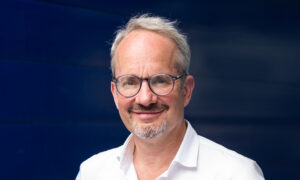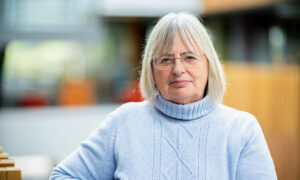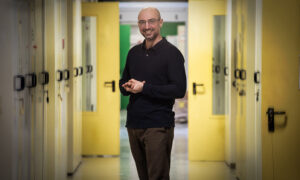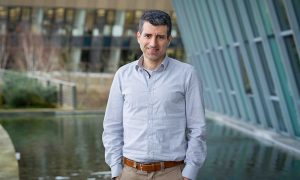
We are EMBL: Marta Cherubini on understanding maternal-fetal communication
Marta Cherubini, Senior Researcher at EMBL Barcelona, is growing leadership skills while troubleshooting scientific challenges and supporting her colleagues' growth
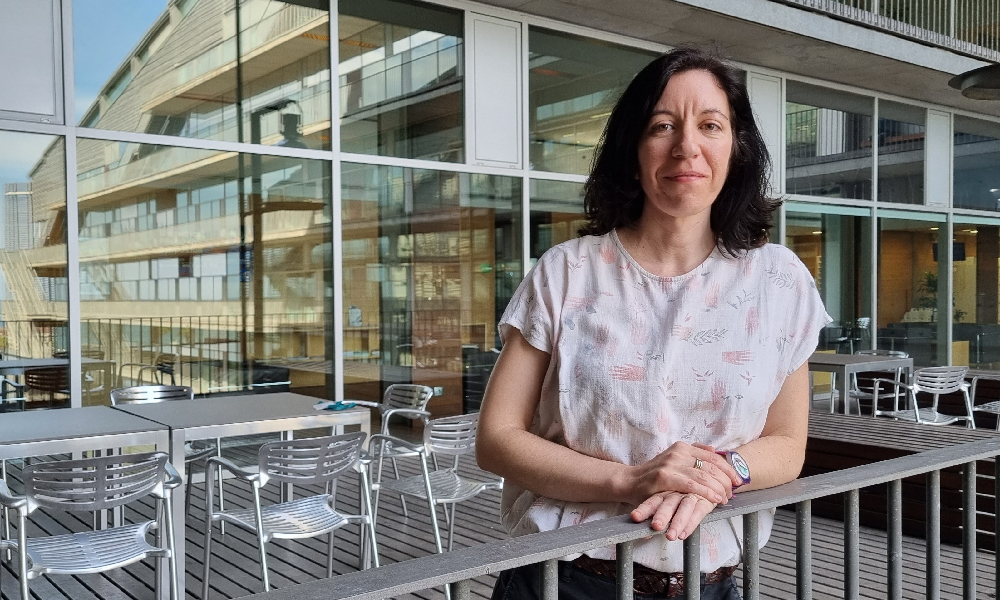
Marta Cherubini is an expert in applying the scientific method, whether in the lab or in her daily life. At EMBL Barcelona, she is developing a 3D in vitro microfluidic-based model of the human placental barrier. This tool will have potential applications in studying pregnancy complications, such as preeclampsia. At home, she enjoys crafting things from scratch and repairing broken items. In both scenarios, careful observation and a problem-solving mindset are essential – and ideally, both end with a satisfying sense of achievement.
We caught up with Marta to explore the rewarding moments and the challenges she faces, especially in her role as a senior researcher at EMBL Barcelona.
Tell me about yourself and your scientific background.
I am originally from Italy, where I completed my studies in molecular biology. After a brief period working as a research assistant, studying the isolation of stem cells from human placentae, I pursued a PhD in biomedicine. During my doctoral research, I investigated mitochondrial dysfunction in the context of Huntington’s disease, using both cellular and animal models to explore the mechanisms underlying this neurodegenerative disorder.
Following my PhD, I moved to the UK for a postdoctoral position, where I continued to study mitochondrial function, this time in stem cell-derived dopaminergic neurons from Parkinson’s disease patients. In 2020, I joined Kristina Haase’s lab at EMBL Barcelona, where my research took a new direction, focusing on vascular biology, particularly in relation to the human placenta.
What are some of the big projects you’ve been working on recently?
Since joining the lab, my primary focus has been on developing a robust 3D in vitro model of the human placenta using a microfluidic system, a platform that allows us to precisely control the flow of fluids, mimicking how blood moves in the body. This model incorporates two of the most important cell types in the placenta: trophoblasts, which form the outer layer of the placenta and help regulate exchange between mother and fetus, and feto-placental vascular cells, which line the blood vessels on the fetal side and are key to forming a functional circulatory system.
Initially, my work focused on establishing the vascularised fetal compartment and exploring how fluid flow affects its architecture and function. This area remains poorly understood but is essential for uncovering how placental vascular development contributes to healthy pregnancies. More recently, my efforts have been directed toward developing a new model by incorporating the epithelial layer formed by trophoblasts, which plays a central role in the communication between maternal and fetal compartments. This maternal-fetal interface model ensures that the barrier more accurately mimics the in vivo environment.
We’re also aiming to model pregnancy-related disorders such as preeclampsia, to gain deeper insight into poorly understood mechanisms and improve therapeutic strategies for these conditions. Building on this foundation, and taking into account that pregnant women are typically excluded from clinical trials, we are now preparing, with the help of EMBLEM, to leverage our placenta model for drug safety testing. This work aligns with growing regulatory interest, as the FDA is increasingly fast-tracking in vitro models that address critical gaps in safety assessment where traditional approaches fall short.
Can you elaborate a bit more on how 3D in vitro systems can help researchers understand common obstetric complications, such as preeclampsia?
The study of pregnancy complications like preeclampsia has so far relied on placental explants (small samples of placental tissue collected and maintained under laboratory conditions) and animal models. However, explants degrade rapidly after collection, limiting their utility, and animal models, while informative, differ significantly from human physiology and do not naturally develop conditions like preeclampsia. 3D in vitro systems offer a promising alternative by recreating key structural and functional aspects of the human placenta in a controlled environment. These biomimetic platforms overcome ethical limitations, reducing reliance on animal models. By incorporating human placental cells, fluid flow, and tissue architecture, microfluidic-based in vitro models allow for investigating maternal-fetal barrier function, exchange mechanisms, and the pathophysiology of placental disorders with unprecedented control.
Can you tell us more about your role as a senior researcher at EMBL Barcelona? What are your favourite parts of your job and the biggest challenges?
I’ve been a senior researcher at EMBL Barcelona since October, after previously working as a postdoc in the same group. While the transition has been relatively smooth, the role entails an increase in responsibility, particularly in terms of mentoring and supporting my colleagues. This role has not only improved my leadership skills but is also helping to prepare me for a more independent role in the next stage of my research career.
One of the parts I enjoy most about my job is being a point of reference in the lab, both scientifically and technically. I find it very rewarding to guide experiments, troubleshoot challenges, and support my colleagues’ growth. It’s fulfilling to contribute not only through my own research but also by helping create a collaborative and positive working environment. Being at EMBL Barcelona, with its interdisciplinary approach and vibrant scientific community, adds even more value to the experience.
As for challenges, the biggest one is managing my time effectively to meet the demands of high-quality research, project planning with the PI, lab coordination, and team support without becoming overwhelmed. Balancing these responsibilities is a continuous learning process, and I’m working to improve it step by step.
Do you have any unusual hobbies or interests?
I’m not sure it’s unusual, but I really enjoy making things from scratch and fixing broken items. I’ve always been passionate about anything handmade, whether it’s crafting soap and candles, knitting clothes, or experimenting in the kitchen. Since becoming vegetarian, I’ve especially enjoyed creating flavourful dishes using only plant-based ingredients, like making my own tofu. I also love repairing things; there’s something incredibly satisfying about taking something apart, identifying the problem, and putting it back together to make it work again. In many ways, it feels a lot like doing a scientific experiment: careful observation, problem-solving, and that great sense of achievement when it all comes together.
Spending time with my dog, Grogu, is also a big part of my life. I adopted him four years ago when he was just three months old, and his unconditional love has changed me in ways I never expected. Whether we’re out for a walk, relaxing at home, or travelling, I try to be with him as much as I can; he’s truly my constant companion.
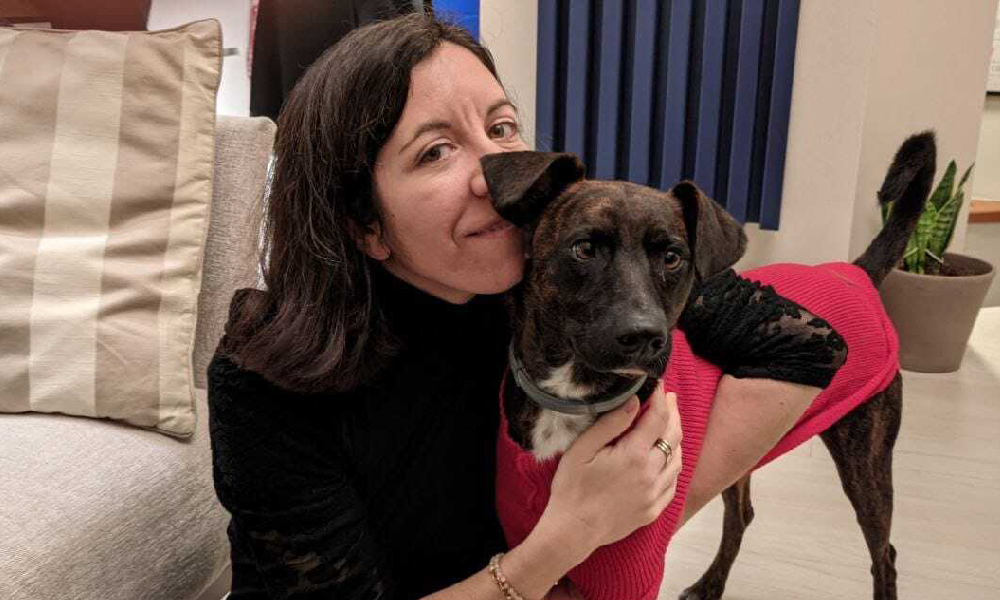
Describe yourself in three words.
Driven, caring, and dog-devoted.
